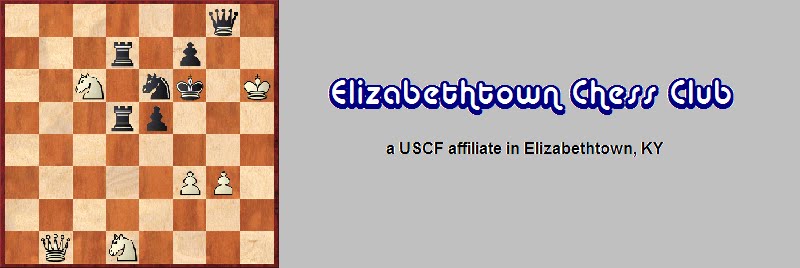OK. I know that you've heard it before: 'tactics, tactics, tactics'. But does it really work? The theory goes this way: most club level games end after one player gains a decisive material advantage. And you've heard the old saying that a chess game is won by the player who made the next to the last mistake. So it seems that it's a mistake that decides a chess game, not a clever tactic. But wait! The mistake that's usually made is walking into a simple tactical shot! And so the saying from Dan Heisman: "basic tactic skills should be used to prevent an opponent’s tactics, not to find winning tactics for oneself!”
So, where do you go to get your tactical skills up to date?
Find out below the fold:
For the popular book that sold the idea of "tactics, tactics, tactics" read De La Maza's Rapid Chess Improvement (found in our library) or the original articles on the subject here and here. Though his idea is a bit single-minded, it'll light a fire under you.
To learn the basic tactical themes I can recommend Learn Chess Tactics by John Nunn. Not just a puzzle book, it has step-by-step explanations of the mechanics of the major tactical motifs. You can also try Chess Tactics for Kids, which is also for adults and includes basic attacking ideas. Read a free article on the basics here. And learn how to spot tactical possibilities with The Seeds of Tactical Destruction.
You can learn the basic mating skills needed for tactics from How to Beat Your Dad at Chess (which perhaps should have been titled How to Beat Your Kids at Chess) or The Art of the Checkmate. Practical mating sequences are found in Mastering Checkmates by McDonald (in our library).
For a more comprehensive treatment of the nuts and bolts of tactics I would suggest Predator at the Chessboard (also available in book form).
For practice, there are perhaps as many puzzle collections as opening books! I have personally found computer-based solutions the handiest for training. Of the many titles availabe from Chessbase, you can start with The Great ABC of Chess Tactics. Though it comes with a free chess reader to view the puzzles, it is much more effective to download Chessbase Light 2009 for free. Popularly used is CT-ART, though it would not be my first recommendation. It is perhaps more suitable for intermediate or advanced players and does have usability issues.
If you find a book more effective to take with you everywhere for a little practice, you might try one of the books by Alberston and Wilson. You can even find one in our club library. Also in our library are titles such as 1001 Winning Chess Sacrifices and Combinations and 1001 Brilliant Ways to Checkmate by Fred Reinfeld. The puzzles found in the CT-ART program can be found in book form here. A simple search at Amazon will yield more puzzle books than you can handle.
Another choice is to get your tactics training for free on the internet. If you play with the club online, you might want to try the tactics trainer at Chess.com. But probably the most popular site for tactics training is the Emrald Chess Tactics Server. For those who'd like their tactics straight from the chess greats you can't beat Chess Puzzles by GMs.
Are you a real tactics fanatic? Why not start your own collection of tactics puzzles? You can use a program like Fritz to find them for you. Choose the Analysis or Blunder Check option. Just be sure to check the box for 'Training'. This will cause Fritz to generate training questions wherever there's a tactic, just like puzzle sets that you buy from Chessbase. You can lower the time settings since Fritz finds most simple tactical shots very quickly. And use shift-click to select multiple games from the database window to search for tactics in several games at once. Just want to search games from the top players? Just use the 'Filter Games' option on the 'Edit' menu of the database window and set an ELO range that suits you. And set a date range ending with something like 1945 to search only the classics. These methods can also be a great way to find the latest tactics played by searching TWIC files.
Not enough info to whet your appetite? Fire up Google and start searching for your own treasure trove of tactics resources.

2 comments:
Nice article with lots of info. The only thing I would like to clarify is what Dan stated: “One of the most important ideas involving safety is that basic tactic skills should be used to prevent an opponent’s tactics, not to find winning tactics
for oneself!” In other words, tactics are used far more in defense to "test" the safety of each candidate move you are considering as opposed to using them on offense.
Thanks Ernie. Your comment reminds me that a unique resource is Dan Heisman's book Looking for Trouble. Though it includes 200+ puzzles that seem rather like we are used to, the idea here is to spot the tactic that your opponent is about to play and to then decide what action to take to prevent it. This is a complete turnaround from most tactics books and puts you in a situation perhaps more like a player faces in real games. Dan says that this practice will help you to "spot threats generated by your opponent's previous move, and also to make sure your move does not create new tactical opportunities for him as well."
Post a Comment